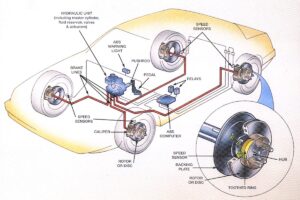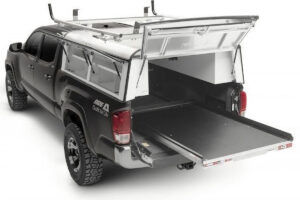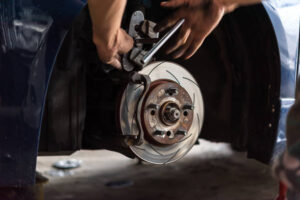
Ensuring Safe Braking: A Guide to Brake Preventive Maintenance
A Guide to Brake
Home » How to Thoroughly Inspect Your Brake Pads
The lifespan of your brake pads depends on several factors:
We can’t give you a concrete number of how long your brake pads will last, but OEM brake pads on daily drivers last between 30,000 and 70,000 miles. If you run oversize wheels and tires, between 20,000 and 40,000 is more realistic.
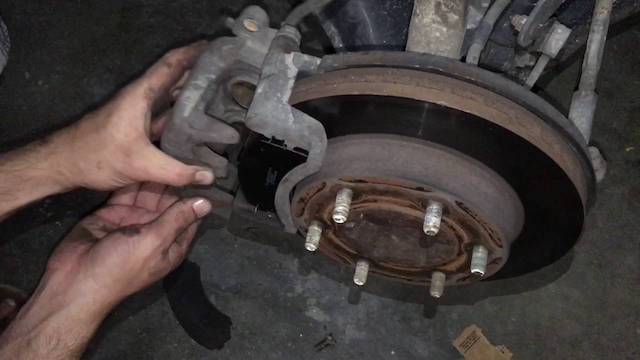 Image Credit: Marklar1
Image Credit: Marklar1
We recommend always keeping an eye out for the most common symptoms of worn pads. If you notice any, you should inspect them and replace them right away if needed.
The best DIY way to determine if you need new brake pads is to physically inspect your brake pads to see if they still have any life left in them. This guide has all the information you need about inspecting your brake pads.
Routinely inspecting your brake pads on all four wheels is a chore no one wants to do. So we recommend just waiting until you experience some of the symptoms of worn brake pads. As soon as you notice any symptoms, you should inspect immediately, to prevent your wallet from buying rotors. Here are some symptoms of brake pads that have gone bad:
First, measure the thickness of your brake pad lining.
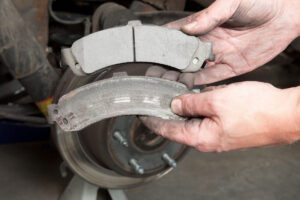 Image Credit: iStock/BanksPhotos
Image Credit: iStock/BanksPhotos
Be sure to check the rotors too. You want to see if there are any scratches or grooves in the rotors. If the brake pads get thin enough, there will be metal-to-metal contact between the pads and rotor, and that can really damage the rotor and reduce your truck’s braking power.
Sometimes your brake pads aren’t too thin, but they’ve worn unevenly. This often means that there’s an underlying problem within the brake system, so it’s important to pay attention to the type of uneven brake pad wear your pads are showing. Here are some of the most common types of uneven brake pad wear and what each one could mean.
When the inboard pad is thinner than the outboard pad, then this could mean a few different things:
When the outboard pad is thinner than the inboard pad, then this could mean a couple of different things:
Tapered brake pad wear could mean one of these issues:
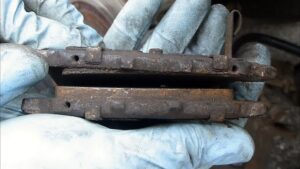 Image Credit: ChrisFix
Image Credit: ChrisFix
Any cracking, glazing, or lifted edges in the pads means that there has been thermal distress. That can be caused by many things, including:
If you see uneven pad wear, you should inspect your calipers for proper operation. A caliper inspection guide can be found here.
Please contact us if you have any questions about inspecting your brake pads.
